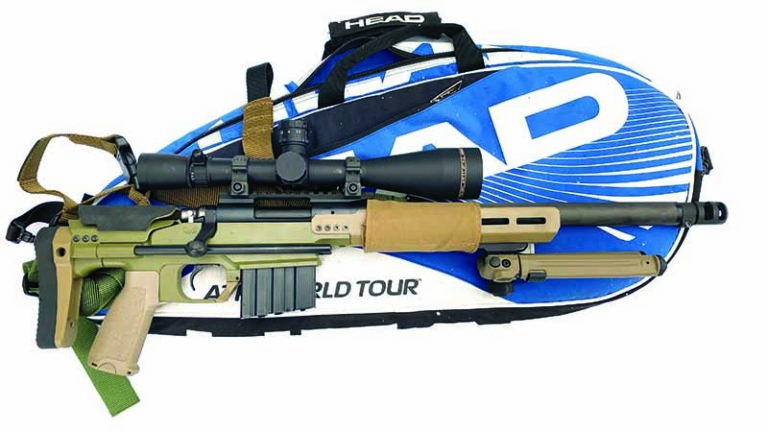
What's a portable precision rifle? How about something you can sling in a shoulder bag and reach out 1,000 yards and beyond.
Just a couple decades ago, you never really saw a bolt-action with a barrel length less than 20 inches. For the better part of a century, it was common practice for rifles to have a standard length of 24 inches and, as a result, most of the industry’s ammunition testing is done with barrels of this length. This has led to a misconception that long barrels are needed for accuracy, but this and other myths are being dispelled as technology and new materials allow unheard-of performance.
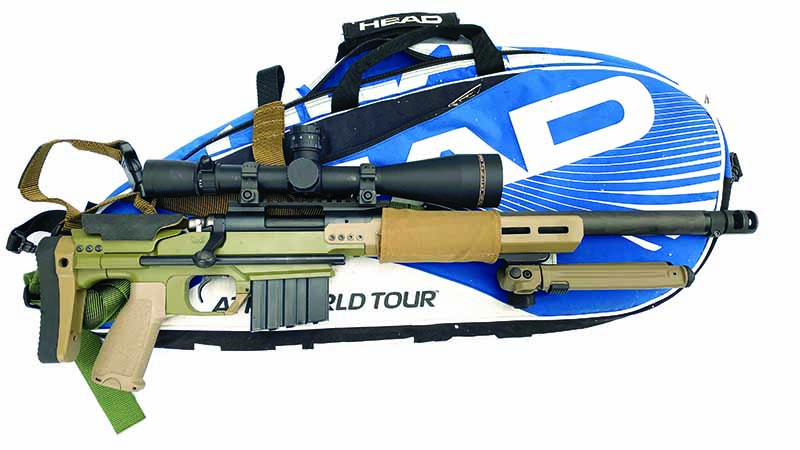
Case in point: a 16-inch 6.5 Creedmoor that fits in a racket case and can drill targets past 1,000 yards.
The Portable Precision Rifle
Action
To accomplish the feat of building out a rifle that can fit into a racket case and pick off plates at a grand, I went about it with the idea that it’d need to be very rigid—while saving weight in the most important areas for portability. The basis of the build is a squared-up Remington 700 action. While other, more compact actions were available, it just made the most sense to work with something that wouldn’t require special stocks and scope rails.
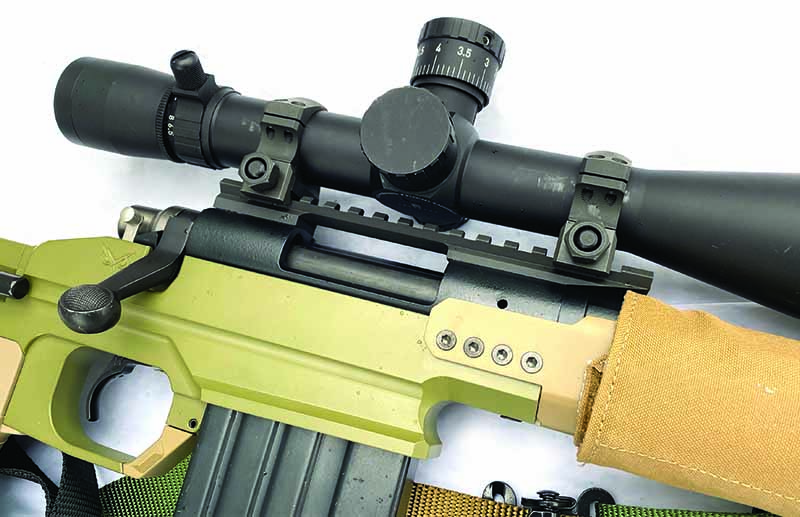
Barrel
While the action didn’t take much thought to work out, the barrel was different. A short, 16-inch all-steel barrel is heavy, and it’d need to be a full contour to absorb heat and maintain stiffness. The weight of such a barrel would make so small a rifle hard to use, so I instead went with a carbon-fiber tube from X-Caliber barrels. This barrel makes use of a Savage-style barrel nut to set headspace, so it was easy to install on the action with just a set of go and no-go gauges from Brownells for a proper installation. The thick barrel was finished out with a Badger Ordnance muzzle brake.
Stock
The stock is very unique in that it telescopes instead of folds to the side. JTAC Industries is a smaller company that hasn’t seen much press, which is a shame because they managed to deliver a telescoping stock that’s actually solid with virtually no wiggle. It even locks in three positions for length of pull. They make stocks for Howa actions as well—even the mini action. This model is called the Screech Owl.
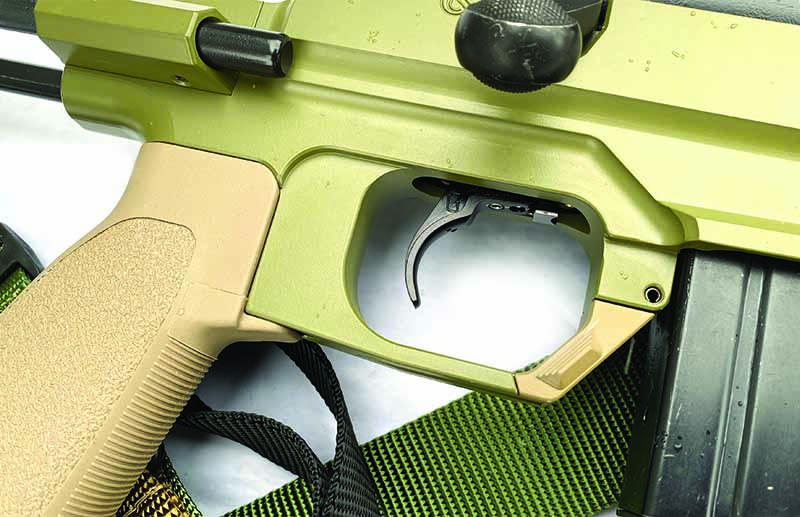
Optics
The other parts I put into the build ensure maximum versatility and weight savings where possible. The scope, a Leopold VX3i LRP, was added due to its low weight, protected windage turret and wide magnification range. It was secured to the rifle with a Nightforce base and Badger Ordnance rings. A Magpul bipod and BCM grip finished it out.
To prevent heat distortion on the scope, a KE Arms SHTF wrap was added. Carbon-fiber barrels radiate heat very quickly, and this little product can help reduce mirage. The rifle was set up with a Short Action Precision sling for positional shooting support: The quality of these slings cannot be understated, if you ever shoot from a place other than a bench. The trigger is a two-stage unit from Geissele Automatics and is very much at home on a compact rifle.
Firing The Rifle
In case you were wondering, this thing barks. You’ll want some ear protection. The ergonomics of the build are good, with the only minor issue being the short length of the cheek rest. While firing 120-grain bullets, the rifle hardly moves, which makes it perfect for spotting your own hits.
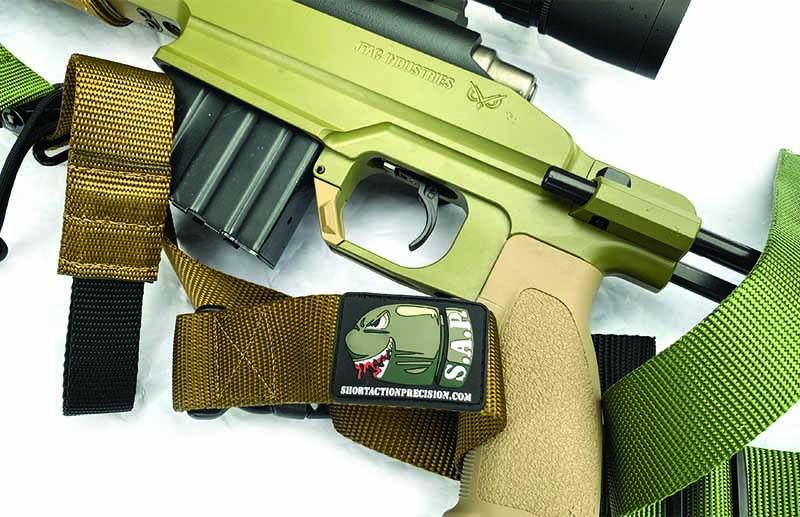
The rifle was zeroed for 200 meters with Black Hills Gold 120-grain GMX , where it printed groups of 1 inch for five shots at that distance. Velocity was 2,735 fps. My 26-inch barrel velocity for the same load is 2,949 fps, meaning it loses about 21 fps per inch.
I went up with a fast handload, featuring Hornady 120-grain ELD Match loaded up to 2,900 fps. I got this load up to 3,000 fps, but it was blowing out primers, so I dialed it back a touch. This load grouped 1 MOA at 1,000 yards.
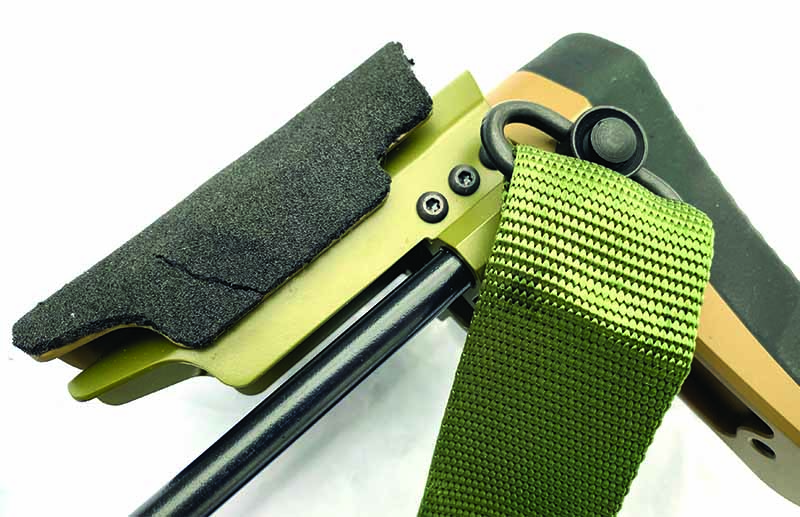
Now, compare this to the standard for .308 Win., the 24-inch barrel and 175-grain Sierra MatchKing at 2,600 fps. As a baseline, the 120-grain ELD-M from this short rifle generates superior speed from a barrel far shorter, and at 1,000 yards, has 8.7 mils of drop as opposed to 11.3 on my calculations. The .308 is also right at subsonic velocity at 1,000, but the 120-grain 6.5mm is still supersonic. Wind drift is actually very similar between the two across the board, as is retained energy. The 120-grain 6.5mm is about equal in energy at 1,000 to the 175-grain .308 Win.
Using handloads to maximize performance is perfectly fine, considering I built the rifle to begin with, but that’s not to say that you can’t get the same performance from factory ammo. The 143-grain ELD-X in factory form is slower but better than the 120-grain handloads, but it increases recoil for no discernible gain on target other than slightly better wind drift. The point of this is that short barrels paired with efficient bullets fired from effective cases can yield amazing results.
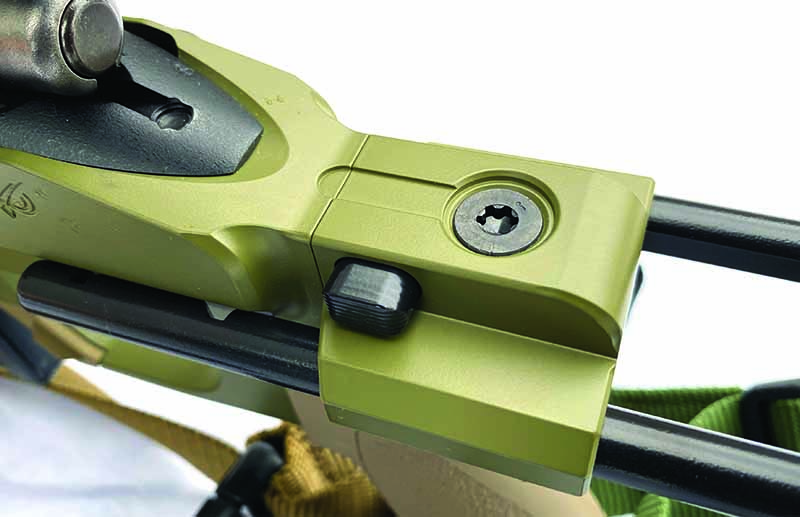
To wrap this up and put it in a racket case: You don’t need a long barrel for long range, but you need to consider the bullet and cartridge first. You can’t do this with a 16-inch .308 Win., because the bullets and cases won’t allow it. Pick the range you want to shoot, then the bullet and everything else will fall into place after that.
You’ll likely be surprised how short you can go and not miss a beat these days. It’ll only get better from here, as technology allows more performance in less space.
Editor's Note: This article originally appeared in the March 2021 issue of Gun Digest the Magazine.
More On Bolt-Action Rifles:
- Building A Precision Rifle With The Faxon FX7 Action
- Top 10 Bolt-Action Rifles For Hunting
- Mossberg Patriot: True Globetrotting Hunter
- Best Affordable .308 Rifles For The Hunt
- Best .22-250 Rifle Buyer's Guide

Next Step: Get your FREE Printable Target Pack
Enhance your shooting precision with our 62 MOA Targets, perfect for rifles and handguns. Crafted in collaboration with Storm Tactical for accuracy and versatility.
Subscribe to the Gun Digest email newsletter and get your downloadable target pack sent straight to your inbox. Stay updated with the latest firearms info in the industry.

![Best Concealed Carry Guns In 2025 [Field Tested] Wilson Combat EDC X9S 1](https://gundigest.com/wp-content/uploads/Wilson-Combat-EDC-X9S-1-324x160.jpg)


![Best 9mm Carbine: Affordable PCCs [Tested] Ruger Carbine Shooting](https://gundigest.com/wp-content/uploads/Ruger-Carbine-Shooting-100x70.jpg)
![Best AR-15: Top Options Available Today [Field Tested] Harrington and Richardson PSA XM177E2 feature](https://gundigest.com/wp-content/uploads/Harrington-and-Richardson-PSA-XM177E2-feature-100x70.jpg)

Actually I’ve had a HEAD racket case for my PS90 for the past 4 years. Makes a great stealth case, kinda like the 1920s Chicago mobsters “violin” cases for Tommy guns.
And now I carry my RUGER PC chassis carbine in it WITHOUT RUGER’s trick of taking off the barrel/forearm because I converted the stock to a folder with a Midwest Industries “folding buffer adaptor” and an LBE buffer tube with the original MOE adjustable stock going back on the buffer tube.
I like the fact that my (red) HEAD racquet bag has a side pouch that fits either my PS90 50 round mags or a bunch of 31 round GLOCK “happy sticks”.
A rolling block or break action would shorten the package up. Yes, I know rounds per minute would be reduced but with a precision rifle do you need multiple rounds down range?
would like to see results with 6mm creedmoor in similar small rifle format .
Yes I would like to see those results, please.
I’m going to build a 16 inch precision
Right now have a Ruger precision 24 inch
Long barrel for velocity not accuracy. Accuracy based on quality of rifle components/integration + ammunition components.